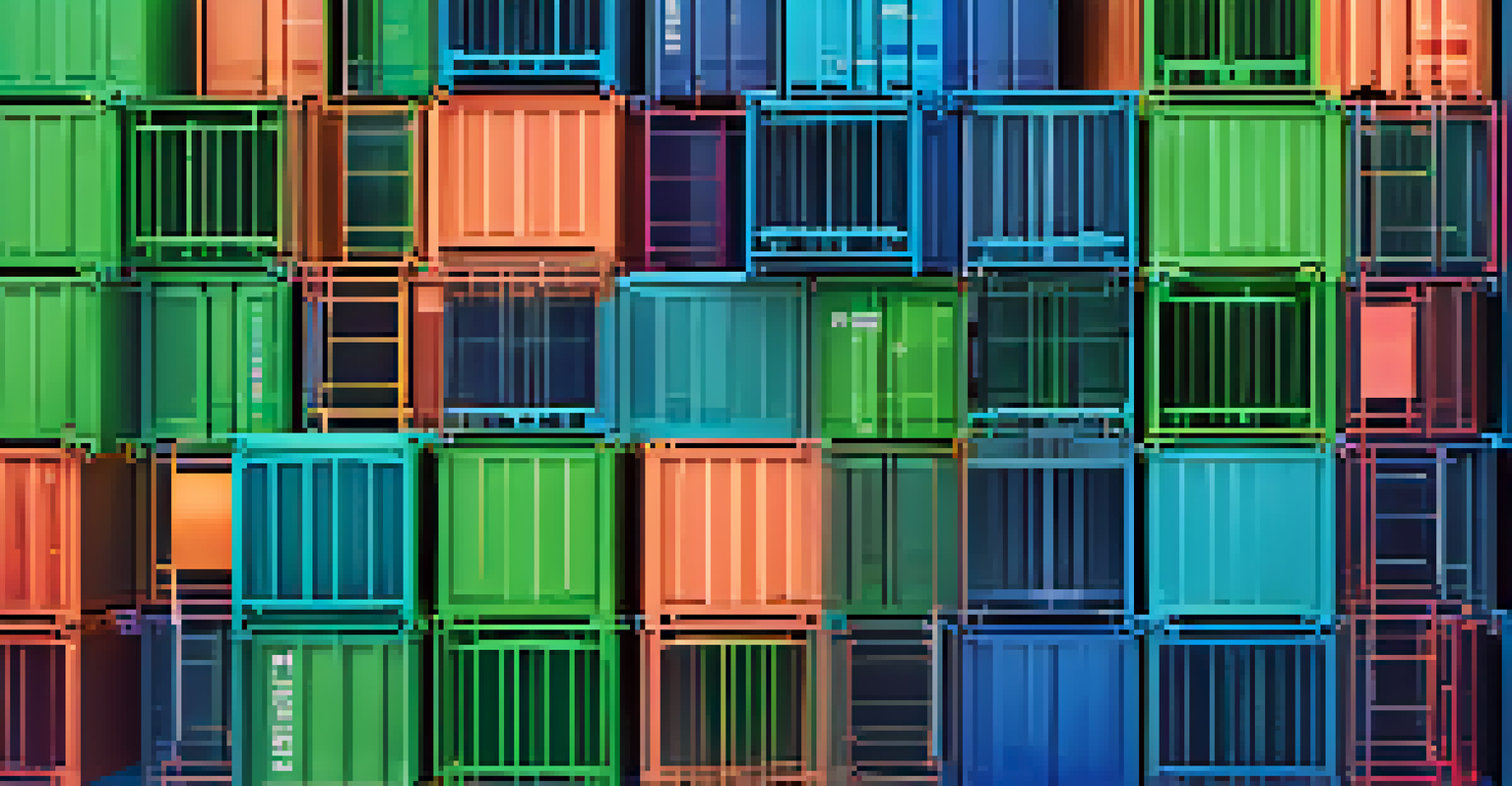The Future of Containerization: Trends to Watch in 2024

Increased Adoption of Microservices Architecture
As businesses strive for agility, microservices architecture continues to gain traction. This approach allows organizations to break down applications into smaller, manageable services, making it easier to develop, deploy, and scale. With containerization, these microservices can be packaged and managed efficiently, resulting in faster time-to-market and improved resource utilization.
The best way to predict the future is to invent it.
For example, a retail company might deploy separate containers for inventory management, user authentication, and payment processing. This separation allows teams to work on each component independently, accelerating development cycles and enhancing the overall user experience. As more companies recognize these benefits, we can expect a significant increase in microservices adoption in containerized environments.
Furthermore, this shift will likely lead to more tools and platforms designed to support microservices, further simplifying the process for developers. As we move through 2024, expect to see a surge in demand for container orchestration technologies that facilitate the management of these microservices.
Sustainability and Green Initiatives in Containerization
Sustainability is becoming a focal point for businesses across all sectors, and containerization is no exception. Companies are increasingly recognizing the environmental impact of their operations and are seeking ways to reduce their carbon footprint. Containerization can help achieve this by optimizing resource usage and minimizing waste during application deployment.

For instance, using containers allows for more efficient use of server resources, as multiple applications can run on a single server without conflict. This consolidation not only reduces energy consumption but also lowers operational costs, making it a win-win for businesses. As organizations prioritize sustainability, we can anticipate an uptick in eco-friendly practices within containerization.
Microservices Drive Agility in 2024
Organizations are increasingly adopting microservices architecture to enhance development speed and resource management.
In 2024, expect to see the rise of container solutions that specifically focus on sustainability metrics, allowing companies to track their environmental impact more effectively. This growing trend will motivate businesses to adopt greener technologies and practices in their containerization strategies.
The Rise of Edge Computing and Containerization
As the Internet of Things (IoT) continues to expand, edge computing is emerging as a crucial component of modern infrastructure. This technology allows data processing to occur closer to the source, reducing latency and improving response times. Containers play a vital role in this shift, enabling lightweight applications to be deployed at the edge seamlessly.
We cannot solve our problems with the same thinking we used when we created them.
For example, a smart manufacturing facility can use edge computing to process data from sensors in real-time, allowing for immediate decision-making. With containerization, these applications can be easily managed and scaled across multiple edge devices, ensuring optimal performance. This combination of edge computing and containerization will be a game-changer in various industries.
In 2024, we can expect to see more businesses leveraging containerized applications at the edge, leading to faster insights and enhanced operational efficiency. As this trend gains momentum, innovative solutions for managing and orchestrating edge containers will likely emerge.
Enhanced Security Measures for Containerized Environments
As containerization becomes more prevalent, ensuring the security of these environments is paramount. Cyber threats are continually evolving, and organizations must adopt robust security measures to protect their containerized applications. In 2024, we will see a greater emphasis on security best practices and tools tailored for container ecosystems.
For instance, integrating security scanning tools into the CI/CD pipeline can help identify vulnerabilities before they reach production. This proactive approach allows organizations to address potential threats early in the development process, minimizing risks. Additionally, organizations will increasingly implement runtime security measures to monitor container behavior and detect anomalies.
Sustainability in Containerization
Businesses are prioritizing eco-friendly practices in containerization to reduce their carbon footprint and operational costs.
As awareness of container security grows, we can expect to see a surge in demand for security-focused container orchestration platforms. These platforms will offer built-in security features, making it easier for organizations to maintain secure containerized environments while focusing on their core business objectives.
AI and Machine Learning Integration in Containerization
Artificial Intelligence (AI) and Machine Learning (ML) are transforming various industries, and containerization is no exception. As organizations look to harness the power of AI and ML, the ability to deploy these technologies in containerized environments will become increasingly crucial. In 2024, we can expect to see more companies leveraging containerization for their AI and ML projects.
For example, data scientists can use containers to package their models, ensuring consistent environments across development, testing, and production. This consistency reduces the 'it works on my machine' problem, allowing for smoother deployments and more reliable results. Moreover, container orchestration tools can help scale AI and ML applications dynamically based on demand.
As this trend gains traction, we can anticipate a growing number of tools and frameworks designed specifically for deploying AI and ML models within containers. This will empower organizations to unlock the full potential of their data and drive more informed decision-making.
Containerization and the Shift to Hybrid Cloud Environments
The hybrid cloud model is gaining popularity as organizations seek to balance the benefits of public and private clouds. Containerization is a natural fit for hybrid cloud environments, allowing applications to be easily moved between different cloud infrastructures. In 2024, we can expect to see a growing emphasis on leveraging containers to facilitate this transition.
For example, businesses can run sensitive applications in a private cloud while deploying less critical workloads in a public cloud. This flexibility allows organizations to optimize costs and resource allocation while maintaining control over their most sensitive data. Containerization simplifies the process of migrating applications between clouds, enabling seamless operations across diverse environments.
Hybrid Cloud and Container Flexibility
Containerization simplifies the transition to hybrid cloud environments, enabling organizations to optimize resources across public and private clouds.
As hybrid cloud strategies become more prevalent, we anticipate the development of tools designed to enhance container management in these complex environments. This will enable organizations to unlock new efficiencies and maximize their cloud investments.
The Importance of Container Orchestration in 2024
As containerization continues to gain traction, effective orchestration becomes essential for managing complex deployments. Container orchestration tools automate the process of deploying, scaling, and managing containers, ensuring that applications run smoothly and efficiently. In 2024, we will see an increased focus on enhancing orchestration capabilities to meet the growing demands of containerized environments.
For example, Kubernetes has become the industry standard for container orchestration, but emerging alternatives like Apache Mesos and Docker Swarm are also gaining popularity. These tools enable organizations to manage large-scale container deployments with ease, allowing for automated scaling and self-healing capabilities. As more businesses adopt containerization, the need for robust orchestration solutions will only grow.

In the coming year, expect to see innovations in orchestration technology that improve user experience and integrate seamlessly with other cloud services. This evolution will help organizations navigate the complexities of container management, enabling them to focus on innovation and growth.